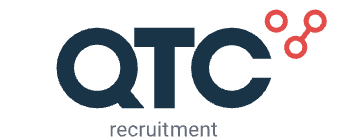Written by Manon - 7 Minutes reading time
Four major career risks that are frequently worthwhile to take

You’ve revised your resume and spellchecked your cover letter. Your LinkedIn profile is finally up to date. The Excel spreadsheet of potential companies, keyword search terms, recruiters, and people to contact in your network is complete.
Let the job search begin — you are more than ready! Right?
Well … not so fast.
As an executive coach, I see clients fall into this trap all the time. In a fit of excitement or eagerness to begin the application process, they submit themselves to roles without first taking the time to consider what they really want. They think that they can only use their expertise in one way and this one-track approach drastically limits their potential.
If you want to grow and be fulfilled and engaged at work, there are a few things you should consider before beginning your search. I recommend the four-step process highlighted below: G.R.O.W.
It’s something I’ve used to help several candidates make smarter decision about their careers.
G: Get clear
If you are not clear on the experiences and capabilities you possess, it’s going to be difficult for you to imagine how you can use them to advance in your profession. To land a job you love, you need to be clear on this. Clarity drives success.
To start, let’s do a career + life review. This is a powerful process designed to help you methodically assess each professional position you’ve held in the past. This includes jobs and internships, volunteer work, and any clubs or hobbies you led or helped organise throughout your education. It’s important to reflect on all of these categories because there may be experiences and aptitudes you gained that aren’t tied to an official J-O-B but that can still be valuable to you now.
The first step involves taking a look at your freshly updated resume. For your most recent role, write down your answer to the following questions:
1) What is your specific job?
2) What are you responsible for?
3) What do you do?
Focus on the actions you perform to fulfil your responsibilities — that is, the physical steps you take to get things done. All actions should begin with a verb: develop, analyse, coach, lead, etc. Cross out any abstractions, assumptions, or MBA school jargon. The goal here is to be as clear and as specific as possible.
Now, review your responses to question number three. Identify and highlight the following:
- Themes or clusters of actions that you want to ensure you use in your new job.
- Actions that intellectually stimulated, challenged, fulfilled, and motivated you.
Consolidate your highlighted items on a separate sheet of paper.
Repeat this process for all your employment and volunteer roles, internships, clubs, and hobbies (even if the ones that aren’t listed on your resume). You will come back to this information later.
R: Recognise your results
To leverage your existing skills, experiences, and talents during the interview process, you need to be able to articulate what they are and the impact you have used them to make in the past. Proof of impact is your currency. Your value lies in your ability to show your potential employer that your skills have historically yielded great results. If you’re persuasive, you can even use this data to sell yourself for a stretch job, or a role slightly more advanced than your experience.
Go back to your resume and answer the following questions for your current position. Jot down your responses below the actions you highlighted in previous step. If possible, try to connect your answers back to those actions by thinking about the specific results each of them yielded.
1) What quantitative outcomes resulted from my actions?
Quantitative results can be counted, measured, and expressed with numbers. Identify each quantitative outcome, and then follow up with a “so what?” question. Numbers without context are meaningless. You need to tell a story about what those numbers mean to communicate the value of the outcome you achieved.
For example, maybe you led an initiative to increase supplier diversity at your organisation by 35%. So what? This promoted innovation in your company by introducing new products, services, and solutions for your customers. It provided multiple channels to source goods and services, and it drove competition (on price and service levels) between your company’s existing and potential vendors.
2) What were my qualitative results?
Qualitative results are descriptive and conceptual. They can be categorised based on traits and characteristics.
For example, maybe you managed a group of interns, and as a result of your leadership skills, one person enhanced their communication skills to be more succinct, precise, and factual. As a result, they were able to quickly resolve customer complaints received on social media and improve the reputation of your brand.
3) What was my overall impact in the role?
Fill in the blanks: When I started in this position our revenue was ________ and our customer service ratings were __________. Over the past year, those numbers have increased by roughly __% as a result of my efforts doing ________ and ________ .
If the above metrics aren’t relevant to you and your position, replace them with something that is. What data can you share that demonstrates your direct impact on your company, customers, or team? This doesn’t necessarily need to be a hard number — it can be a thank-you note from a client or an example of how you worked with a peer to solve a problem or streamline an outdated process.
For each of your professional roles, answer these three questions to recognise your results. You will come back to this data in the next step.
O: Own your impact
In each of your professional positions, you made an impact. Your customers, your team, the company, the community, or an individual was changed because of you and your work. To be fulfilled and engaged in your new job, it’s important to identify the positive feelings associated with the results you identified in the prior step.
You may be tempted to skip this step because it appears too soft, woo-woo, or insignificant. I get it. However, there are positive feelings associated with each of your results. Positive feelings are one of the five elements that help people reach a life of fulfilment and meaning according to Martin Seligman, one of the founders of positive psychology.
So, what did you feel when you identified your results? Joy? Hope? Enthusiasm? Pride? Satisfaction?
Go back to the quantitative and qualitative data you noted in the previous step and note the emotion you felt next to each of your answers.
W: Where and what else?
Your final step is to identify where else you can use the actions you identified in the first step (Get Clear), particularly the ones that created impact (Recognise Your Results) and generated positive emotions (Own Your Impact). This is where all the answers you have written down come together.
For example, let’s pretend that in a previous role you were responsible for managing your company’s LinkedIn account by creating and posting content, responding to messages, and making connections (your actions). You increased connections by 22% and engagement by 14% (quantitative results). You are proud of your results, and you found joy in the work because it was intellectually stimulating (emotional impact). This is a skill you know you want to leverage in your next role.
Now that you’ve made some connections, it’s time to brainstorm how your actions and their impacts demonstrate that you can apply for and get a position beyond the linear journey your resume may indicate. Think about the following:
1) What do you want to do more of in a new position?
2) What do your actions show in terms of what you are able to offer an employer?
3) How can you use your results to advocate for yourself and take on a more advanced or more engaging role?
4) What kind of impact do you need to make to find purpose, joy, or excitement in your work?
Sticking with the example above: Can you leverage this experience to develop content for other marketing channels in your company? Can you create content for internal company communications? Or is it possible to use this experience and explore a sales position that generates leads through social media?
At the end of the day, you are the architect of your career. Follow this process to be intentional as you conduct your job search and open doors that were previously unimaginable. The goal is not just a new job. It is a career and work that fulfils, engages, and enables you to reach your full potential.
These steps will assist you taking the time to consider what you really want in a career. Need more help? QTC recruitment is specialised in assisting you with every step of the recruitment process. QTC Recruitment can benefit you in the field of Life Sciences by providing you with personalised guidance. Find out more information concerning us and our services here.
Read more interesting news.
Also published on HBR.org
Want to stay informed about current Life Science and recruitment news on a regular base? Then register here for free.[/vc_column_text]
